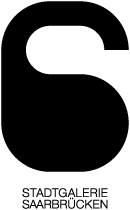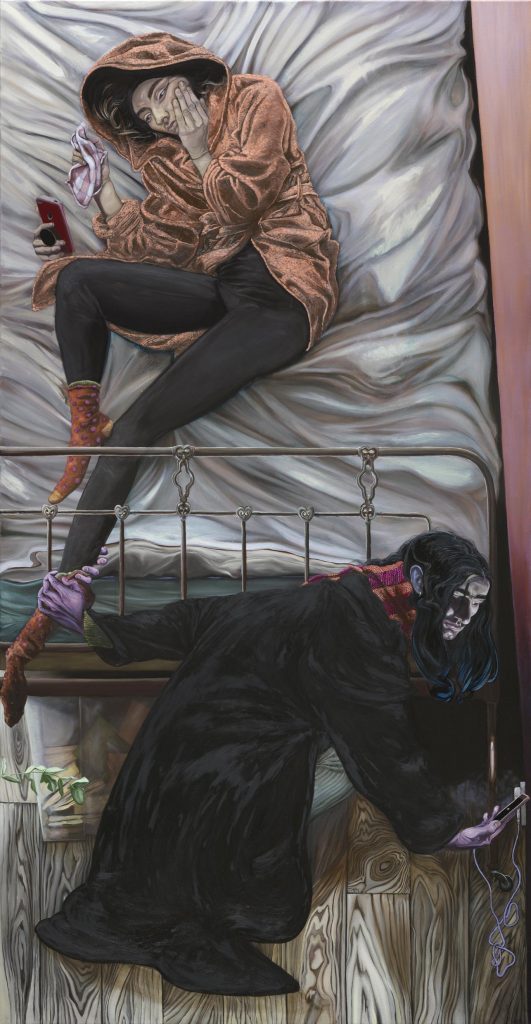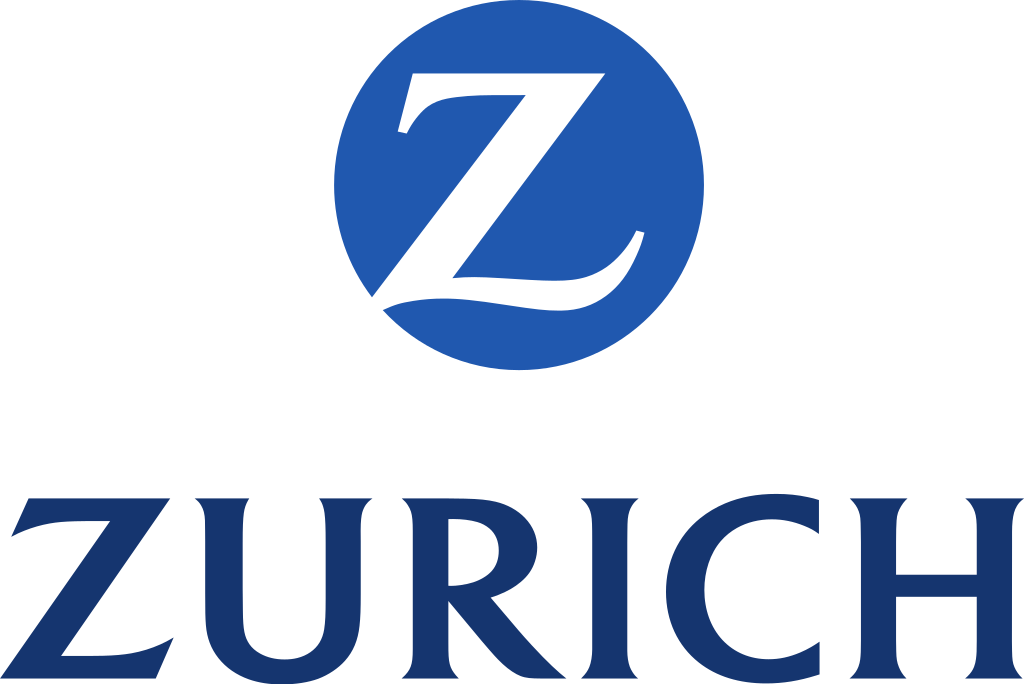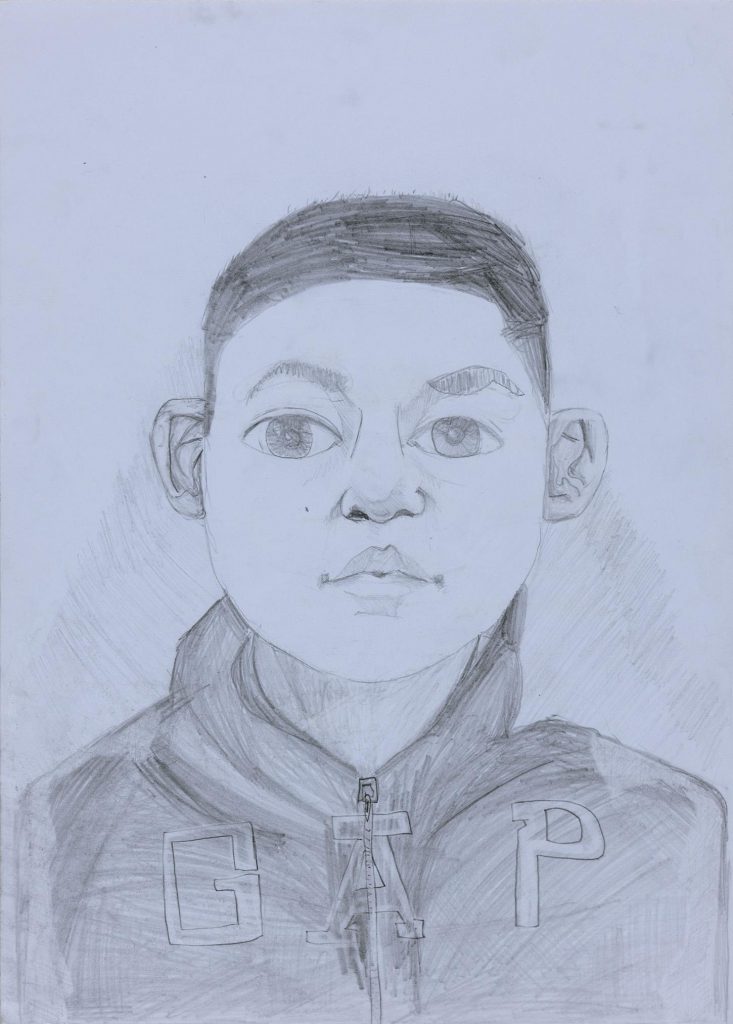Artists’ Film International | 2020
Main page
Main page
Art meets Science in Invisible Light, an expansive new exhibition from The School of Looking funded by Science Foundation Ireland’s (SFI) Discover Programme, which reignites the heritage of Crawford Art Gallery as an institution for both artistic and scientific endeavour.
Through an ambitious, collaborative endeavour with Tyndall National Institute and the Irish Photonic Integration Centre (IPIC), Invisible Light imaginatively explores the Electromagnetic Spectrum in its relationship to history, society, artistic creation and art conservation.
Take a virtual tour of Invisible Light with the artists in the video below.
Just as we can describe the spectrum of visible light in seven colours – red, orange, yellow, green, blue, indigo, violet – we can also divide the Electromagnetic Spectrum into seven zones. The middle zone – the smallest – is the only one we call visible, but in truth they are all visible to us now. The invention and construction of machine eyes to see all this invisible light has been a collective project since the late nineteenth century, and a vision revolution that has made the whole universe visible to us.
Men and women of science have slowly rendered visible the entire range of energy frequencies that permeates our universe – Gamma Rays, X-Rays, Infrared Radiation, Visible Light, Ultraviolet Radiation, Microwaves, Radio Waves – and imagined extraordinary applications for them, including inventions that have progressed society in countess ways, saving lives, allowing us to see into the molecular structure of our cells, gaze far into the universe, and peer behind micron-thin layers of paint to reveal the secrets of the Grand Masters of art.
Marking the 200th anniversary of the birth of visionary Irish scientist John Tyndall (1820-1893), artists Anne Cleary and Denis Connolly from The School of Looking have worked closely with scientists from Tyndall National Institute and Irish Photonic Integration Centre (IPIC), and curators at Crawford Art Gallery to imagine an exhibition that truly unites art and science.
Invisible Light shares this adventure with the public, through seven newly commissioned artworks, each one exploring a region of the Electromagnetic Spectrum and accompanied by seven Ray Days, days of safe public engagement dedicated to each separate type of radiation.
Invisible Light receives its world premiere at Crawford Art Gallery and, in 2021, will represent Ireland at the Universal Exhibition in Dubai.
Click HERE to download a brochure from the exhibition (PDF 1mb)

Crawford Art Gallery presents In Transit featuring artists George Awde (US/Lebanon), Daniel Castro Garcia (UK), Gohar Dashti (Iran), Tanya Habjouqa (Jordan), and Stefanie Zofia Schulz (Germany) an exhibition of photography and filmmaking that focuses on the tentative, limbo-like experience of living between different cultures.
Curated by Peggy Sue Amison (IE/USA) and in partnership with Stadtgalerie Saarbrücken, Germany, In Transit powerfully illustrates the physical and psychological challenges faced when fleeing from unsafe or economically depressed homelands, towards dreams of a more secure future and looks at the deeper discussion of what constitutes citizenship in the wake of the enormous migrations into Europe.
Through their narratives, the artists strive to disrupt accepted misconceptions about immigration and otherness in order to tell a more accurate story. By collaborating with their subjects they give voice to those who must endure mountains of dead time - filled with boredom, sadness, fear, and apathy - while tangled up in bureaucracy in order to become more than merely ‘registered aliens’ or ‘tolerated’ people. The photography and video works in this exhibition are created in Germany, Jordan, Lebanon, Italy, and Iran, and are testimonies to day-to-day survival alongside the struggle to find a sense of normalcy, stability, and a place to call home.
Tanya Habjouqa (JO) is an award-winning photographer, journalist and educator. Her practice links social documentary, collaborative portraiture, and participant observation. Her principal interests include gender, representations of otherness, dispossession and human rights, with a particular concern for the ever-shifting sociopolitical dynamics in the Middle East. Habjouqa’s work has been exhibited worldwide and is in the collections of MFA Boston, Institut du Monde Arab, and the Carnegie Museum of Art. She is a founding member of Rawiya, the first all-female photography collective from the Middle East. She is also one of four mentors for the Arab Documentary Photography Program, organized by Magnum Foundation, Prince Claus Foundation, and AFAC. She is a member of the Noor Agency and represented by East Wing Gallery. Habjouqa lives with her family in East Jerusalem.
Gohar Dashti (IR) received her MA in Photography from the Fine Art University of Tehran in 2005. After studying photography in Iran, she has spent the last 13 years focusing her practice on social issues with particular references to history and culture through a convergence of interests in anthropology and sociology. Her practice continuously develops from life events and connection between the personal and the universal, the political and the fantasized. Her work has been exhibited around the world and is in collections including the Victoria & Albert Museum (UK), Mori Art Museum, Tokyo (JP), Museum of Fine Arts Boston (USA), Nelson-Atkins Museum of Art Kansas City (USA), National Gallery of Art, Washington DC (USA), Museum of Contemporary Photography (MoCP), Chicago (USA), and Kadist Art Foundation, Paris (FR). Dashti presently lives with her family between Iran and the United States.
George Awde (USA/LB) was born in Boston of Lebanese origin. Drawn to alternative narratives, his work delves into issues surrounding citizenship, nationality and sexuality, focusing on people living on the margins of the city and their parallel realities between life in Beirut and elsewhere. He graduated with an MFA in Photography from Yale University in 2009 and holds a BA in painting from Massachusetts College of the Arts, Boston. Awde presently lives between Doha, Qatar; Beirut, Lebanon; and Cairo, Egypt. He is represented by East Wing Gallery and teaches at Virginia Commonwealth University in Doha, Qatar, and is also co-founder and co-director of marra.tein residency program in Beirut.
Daniel Castro Garcia (UK) was born and raised in Oxford, England, by parents who emigrated from Spain’s Galicia region seeking economic opportunities. As the son of immigrants, Castro Garcia wanted to use his work as a photographer and filmmaker to help migrants/refugees have their voices heard. Since May 2015, he has revisited many of Europe’s refugee/migrant hotspots. The book, Foreigner: Migration into Europe 2015 – 2016 was self-published in 2016, with graphic designer Thomas Saxby and producer Jade Morris. In 2017 Castro Garcia received the British Journal of Photography’s International Photography Award and selected as a grantee by the Magnum Foundation Fund. He was also awarded the 2017 W. Eugene Smith Grant in Humanistic Photography. Castro Garcia is represented by East Wing Gallery. He is lives and works in Sicily.
Stefanie Zofia Schulz (DE) was born in Germany and is a graduate of the Ostkreuzschule in Berlin. Her photographic practice focuses on the documentation of important social issues and the human condition. Her work has been exhibited in Festival Circulations (FR) in 2016 and has been published in i-D Magazine, Emerge magazine and Dazed digital. She presently lives and works in Berlin, Germany.
Peggy Sue Amison (US/IE) is Artistic Director for East Wing, a platform for photography founded in Doha, Qatar. As a curator, strategist, mentor, photographic consultant and writer, Amison has collaborated with numerous emerging and established photographers, festivals and publications internationally in Europe, China, the United States, and the United Arab Emirates. She is originally from San Diego, California, and holds a BA in Art from San Francisco State University. Prior to her work with East Wing, she was Artistic Director of Sirius Arts Centre in Cobh County Cork, Ireland from 2001–2014. In Transit was initially exhibited at Gallerie Image, Aarhus, Denmark in 2016.


Crawford Art Gallery and the Zurich Portrait Prize
Crawford Art Gallery is delighted to host the Zurich Portrait Prize 2019 in collaboration with the National Gallery of Ireland in Cork for the first time. This is the first time the exhibition will travel to a city outside of Dublin, creating a greater awareness of the national talent on display. The exhibition will feature the shortlist as chosen by the esteemed judging panel. For the first time this year a special competition for younger artists, the Zurich Young Portrait Prize has been introduced. The shortlisted works, created by young creatives between the ages of 3 and 18, will be on display with the main prize exhibition at Crawford Art Gallery in Cork from 31 January 2020 until 13 April 2020.

ZURICH PORTRAIT PRIZE 2019
31 January–13 April 2020

“Crawford Art Gallery is delighted to partner for the first time with the National Gallery of Ireland on the hugely anticipated Zurich Portrait Prize exhibition. Annually the exhibition and prize giving generates excitement and presents audiences with fresh perspectives on portraiture. We believe it will enable our audiences to make connections with our wider collection and supports our deeper ongoing collaboration with the National Gallery of Ireland.”
- Mary McCarthy, Director of Crawford Art Gallery.
The Award
The Zurich Portrait Prize, now in its sixth year, is open to Irish artists aged 19 and over with an aim to create newfound intrigue and exploration of contemporary portraiture and the possibilities of the medium. The winner will receive a cash prize of €15,000, and a commission worth €5,000 to create a work for inclusion in the National Portrait Collection at the National Gallery of Ireland. There will also be two awards of €1,500 for highly commended works. This is the second year pan-European company Zurich Insurance sponsors the esteemed prize.
Judges for this year’s main prize The Zurich Portrait Prize 2019 judging panel comprises Mike Fitzpatrick, Dean of Limerick School of Art and Design and Director of Cultural Engagement, LIT; Professor Fiona Kearney, founding Director of the Glucksman; and Mick O'Dea, artist and member of the RHA.
Explore the winner, highly commended works and the rest of the Shortlist below.

Enda Bowe: Winner of the Zurich Portrait Prize 2019
Cybil McCaddy with Daughter Lulu, 2018
Photograph – C-Type print, 127 x 101.6 cm
‘This portrait traces the emotional connection between a new parent and her baby, evoking traditional compositions of a mother and child. Further scrutiny reveals details including Cybil's piercings, tattoos and adorned nails which, with the urban setting, give a contemporary update to this classical theme. The portrait of Cybil with her daughter Lulu was made on a housing estate in east London and is part of Enda Bowe’s ongoing project titled Clapton Blossom. The series forms a celebration of humanity and social diversity at a time when walls are being built between nations and politics encourages us to mistrust each other.’
Enda Bowe's work is concerned with storytelling and the search for light and beauty in the ordinary. Writers Carson McCullers and John McGahern, and film directors Lynne Ramsey, Eve Arnold and Lenny Abrahamson influence his work. He has exhibited at the Douglas Hyde Gallery, Dublin; the Victoria & Albert Museum, London; and Red Hook Gallery, New York, among others. Bowe’s four published books include Coast, Kilburn Cherry, At Mirrored River, and This Thing I Want, I Know Not What. He is shortlisted for the Taylor Wessing Photographic Portrait Prize 2019 (National Portrait Gallery, London).

Joe Dunne: Highly Commended
And Their World of Far and Near Things, 2019
Egg/oil tempera on canvas, 160 x 240 cm
‘This painting portrays the artist and his immediate family. Although the work contains references to Diego Velázquez’s Las Meninas, the initial stimulus was a response to the exhibition Vermeer and the Masters of Genre Painting at the National Gallery of Ireland in 2017. What initially began as a contemporary painting of a young woman reading developed into a larger work. This led to a complex composition exploring themes of time, space, transience, portraiture, art and social media, within a familiar everyday setting.’
Joe Dunne was born in Dublin and studied design at the National College of Art and Design. He works within the traditional genres of portraiture, landscape and still life, with occasional forays into more abstract pieces. Egg tempera is a favoured medium, while watercolour and oils also feature in many works. His portraits have received a number of awards including the Keating McLaughlin Medal, 2006, for a group portrait at the RHA, and first prize in the inaugural Davy Portrait Awards in 2008. Portrait commissions by the OPW include former Taoiseach Éamon de Valera and former President Mary McAleese.

Salvatore of Lucan: Highly Commended
Lucy with 3 hands and me holding onto her leg, 2019
Oil on canvas, 250 x 130 cm
'Lucy with 3 hands and me holding onto her leg is a painting about my relationship with Lucy. Relationships are hard work. Is one’s love best for another? Here, we are depicted relaxing. I am at the foot of the bed plugging my phone in to charge. My hand is on her foot. She is depicted with three hands: one on her face, one holding a hanky and the other on her phone. The painting’s composition was influenced by a diagram of a flower.’
Salvatore of Lucan is of mixed-race: half Irish and half Bangladeshi. He was raised by his mother, a single parent, who lives with her mother and his younger sister. He mainly makes work about his own life, often figurative domestic scenes. He always wants to represent himself as accurately as possible. Throughout his life, he has been asked where he is from, to which he has always replied ‘Lucan’. This is why he is called Salvatore of Lucan, to represent himself more accurately. Since graduating from NCAD in 2016, he has been living and working in Dublin.

Following the outstanding success of the National Gallery of Ireland’s nationwide portrait competition, the Zurich Portrait Prize, we are delighted to introduce the first-ever Zurich Young Portrait Prize. This inclusive new art competition launched this year, with the aim of fostering and supporting creativity, originality and self-expression in children and young people. The Prize accepted entries from young people, up to the age of 18, of all abilities, from across the island of Ireland.
Below, you'll see the 20 finalists in four categories (ages 6 and under, ages 7-11, ages 12-15 and ages 16-18), chosen by our panel of judges, which will be displayed in the Millennium Wing Studio from 5 October. The overall winner will be awarded a personalised wooden box of high-quality art materials, specific to their choice of material in their portrait, and a cash prize of €500.
Very special thanks to the hundreds of talented children and young people across Ireland who entered the competition. You inspire us!

Mary and Mabel (12, Dublin) say: "This photo, which was a joint effort, is meant to show that most people have both good qualities and bad qualities". Mary says: "In my spare time I like to dance and make music videos"; Mabel says: "Outside of school I enjoy painting and drawing.".

Callie (6, Dublin) says: "I'm 6 and a half and I really like to draw, and I'm going to keep practicing as I want to do portraits every year for the competition. I want to be an artist and a Lego designer when I grow up. My portrait is of my teacher Sarah in Citywest Educate Together, and I really like how it turned out. I used two different photos of Sarah to get the ideas from. I used lots of different things to make it, and my favourite bits of the portrait is the lights and the dots of colour in Sarah's hair."

Jiaming (8, Dublin) says: "My name is Jiaming Zheng, from Third Class in St Brigid’s BNS Foxrock. I loved drawing when I was a kid. I want to introduce myself to you all by my pencil and mirror."

Erin (15, Kerry) says: "I really enjoy art and drawing and I hope it takes me places in the future. I generally use the same mediums but I like to explore in other forms of painting and drawing styles occasionally. The portrait I have done of my sister took quite a while and I used my favourite form of mixed media. I drew the picture outside during golden hour to get nice lighting."

Cara (17, Louth) says:"This work is inspired by what it means to be a young woman in Ireland today, on the threshold of her future. I am layered with fabric from different countries that represent our modern day, multi-cultured Ireland. I love traditional aspects of portraiture in works by the artists John Lavery and Johannes Vermeer but I wanted to create a portrait with contemporary elements."

On 3 February 1919, Joseph Stafford Gibson died in Madrid. In his will, the native of Kilmurry, County Cork bequeathed his collection of ceramics, coins, engravings, miniatures, silverware, watercolours, and £14,790 (today close to €750,000) ‘for the furthering of art in the city of his boyhood.’
The earliest purchases made under the Gibson Bequest coincided with a tumultuous time for Ireland – the Irish War of Independence and the Irish Civil War framing the emergence of the Irish Free State. The young nation’s subsequent neutrality during ‘The Emergency’ (Second World War) may suggest an increasing distance from world affairs that is contrary to the outlook of the Gibson Bequest Committee.
Perhaps informed by the international life of Joseph Stafford Gibson (1837-1919) himself, works collected in his name demonstrate a distinct outwardness and appetite for British and French contemporary artists, as well as those from Ireland. Moreover, exceptional local artists benefited from Gibson Scholarships which enabled them to travel to and study in London, Madrid, Bayreuth, Paris, and Rome.
You are invited to journey through the work of 35 Irish and international artists to locales – local, foreign, and creative – made before the existence of the European common travel area.
Mise Éire – ‘I [am] Ireland’ – presents a selection of works from the collection. As Ireland and Northern Ireland near the centenary of their foundation, the exhibition seeks to address pertinent questions of independence and partition, and the often strained interplay of history, modernity, and nationalism.
Displayed across two gallery spaces, the exhibition is inspired by the Irish-language poem, “Mise Éire” (1912) by Pádraig Pearse, in which Ireland speaks of its lost glory, its shame, pain, and sorrow. Two further poems, written by William Butler Yeats, are drawn upon to frame the changes, both social and political, that shaped the development of this island during the twentieth century.
Works by artists Robert Ballagh, Rita Duffy, Mainie Jellett, Seán Keating, John Lavery, Mary Swanzy, Jack B. Yeats, among others contribute to our understanding of what both Ireland and Northern Ireland have become: can they offer a vision of progress, even utopia, and still account for violence, censorship, inequality, and exclusion?
By no means exhaustive, this exhibition asks who gets to define Ireland.
Curated by Michael Waldron
Duration: 52 minutes (looped),
Monday-Saturday 10 am - 4:45 pm / Sunday 11 am - 3:45 pm
Back by popular demand, Harry Clarke – Darkness in Light (2003) screens in parallel with MYSTERY & IMAGINATION, our annual exhibition of Harry Clarke watercolours.
Featuring expert contributions from Nicola Gordon Bowe, Peadar Lamb, Ciarán MacGonigal, James Scanlon, and Alan Titley, this documentary presents the remarkable story of a singular Irish artist and the collision between Church, State, and Art in the early twentieth century.
‘Documentarian John J. Doherty examines the life of Clarke and the controversial nature of his work, culminating in his clash with the conservative Irish Free State over his “offensive” masterpiece, the Geneva Window. Visually spectacular and poetically told, Darkness in Light is a fitting showcase of Clarke’s unique and haunting vision.’
Boston Irish Film Festival
Duration: 52 minutes (looped),
Monday-Saturday 10 am - 4:45 pm / Sunday 11 am - 3:45 pm
Writer / Director: John J. Doherty
Producer: Catherine Lyons
A Camel production in association with TG4 / Irish Film Board
© Camel Productions, 2003
Crawford Art Gallery announces a large-scale commissioned exhibition of new work by artist Daphne Wright from 15 November 2019 – 16 February 2020 titled Daphne Wright: A quiet mutiny.
Daphne Wright’s work quietly addresses the human condition and the important stages of life we all pass through, that are at once poignant and mundane. In this exhibition, over two gallery floors, Wright creates worlds that are beautifully eerie: familiar objects from everyday life come under the artist’s scrutiny including buggies, houseplants a fridge and a child’s drawing. Expanding on her existing sculptural practice, Wright focuses on the materiality of dry, unfired clay creating a dichotomy of familiarity and fragility. Wright’s objects are chosen for their momentary quality, these objects are only fleetingly valued in our daily lives.
Two new videos also feature:
Song of Songs poignantly investigates the relationships of care adults have with more vulnerable family members and in the film Is everyone ok? we see an older man in poor health with his face brightly painted like a lion bearing the mental scars of a career spent in middle management. Calling out team-building clichés, he intersperses these with personal responses to queries about his wife’s health. The effect is unsettling as he resides at the interface between work and retirement, usefulness and redundancy.
The exhibition Daphne Wright: A quiet mutiny will be accompanied by a publication with texts by Ellen Mara de Watcher and Oliver Basciano.
Artist Talk: 1p m, Friday 15 November 2019
This annual exhibition follows the success of Dreaming in Blue: Harry Clarke Watercolours and invites visitors to get close to the celebrated Irish artist’s original ink drawings and watercolour studies.
Clarke’s incredibly detailed works illustrate scenes from Edgar Allan Poe’s Tales of Mystery and Imagination and John Keats’ beloved poem “The Eve of St Agnes” (1819-20).
Presented alongside works by fellow artists Margaret Clarke, Seán Keating, and William Orpen, the exhibition will also situate Clarke within his immediate milieu. Delve into the imagination of a true artistic visionary!
Curated by Dr Michael Waldron